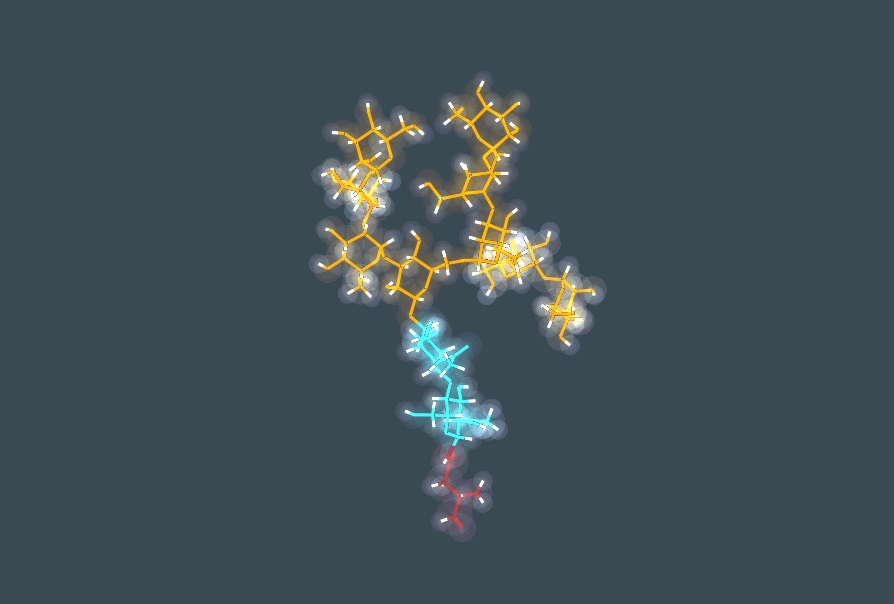

N-linked glycosylation, is the attachment of a glycan consisting of several sugar molecules to a nitrogen atom (the amide nitrogen of an asparagine (Asn) residue of a protein). This type of linkage is important for both the structure and function of many eukaryotic proteins. The N-linked glycosylation process occurs in eukaryotes and widely in archaea, but very rarely in bacteria. The nature of N-linked glycans attached to a glycoprotein is determined by the protein and the cell in which it is expressed. It also varies across species. Different species synthesize different types of N-linked glycans. The major fractions consisted of "high-mannose type" oligosaccharides containing four to nine mannose residues.
This 3D model was generated using SGI (Silicon Graphics) Octane IRIX workstation in 2002.
Glycans are information-rich molecules based on complex carbohydrates (sugars or polysaccharides), attached to proteins, lipids and cells.
All 3D models in this collection were generated using SGI (Silicon Graphics) Octane IRIX workstation in 2002.
Glycans are key players for recognition processes within cells, and between them. Understanding the interaction between glycans and bacteria or viruses outside the cell is critical for our body functions, disease presentation, diagnosis and therapeutics development and vaccine.
Glycomics #61_N-linked glycosylation (high mannose)
- PrixPrix en USDQuantitéExpirationDe
- PrixPrix en USDQuantitéDifférence avec le prix plancherExpirationDe
Glycomics #61_N-linked glycosylation (high mannose)

- PrixPrix en USDQuantitéExpirationDe
- PrixPrix en USDQuantitéDifférence avec le prix plancherExpirationDe
N-linked glycosylation, is the attachment of a glycan consisting of several sugar molecules to a nitrogen atom (the amide nitrogen of an asparagine (Asn) residue of a protein). This type of linkage is important for both the structure and function of many eukaryotic proteins. The N-linked glycosylation process occurs in eukaryotes and widely in archaea, but very rarely in bacteria. The nature of N-linked glycans attached to a glycoprotein is determined by the protein and the cell in which it is expressed. It also varies across species. Different species synthesize different types of N-linked glycans. The major fractions consisted of "high-mannose type" oligosaccharides containing four to nine mannose residues.
This 3D model was generated using SGI (Silicon Graphics) Octane IRIX workstation in 2002.
Glycans are information-rich molecules based on complex carbohydrates (sugars or polysaccharides), attached to proteins, lipids and cells.
All 3D models in this collection were generated using SGI (Silicon Graphics) Octane IRIX workstation in 2002.
Glycans are key players for recognition processes within cells, and between them. Understanding the interaction between glycans and bacteria or viruses outside the cell is critical for our body functions, disease presentation, diagnosis and therapeutics development and vaccine.